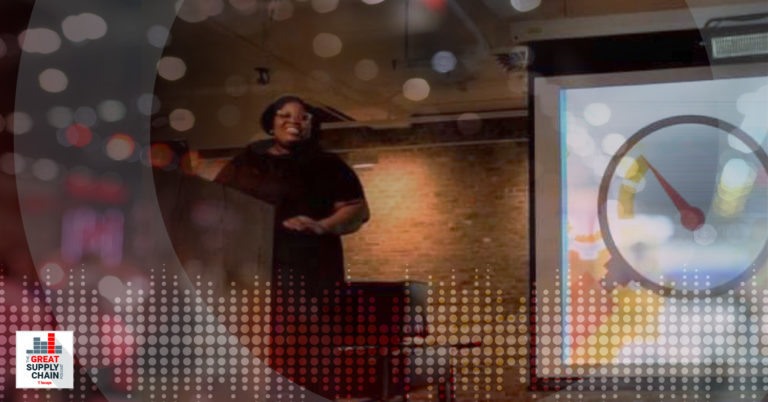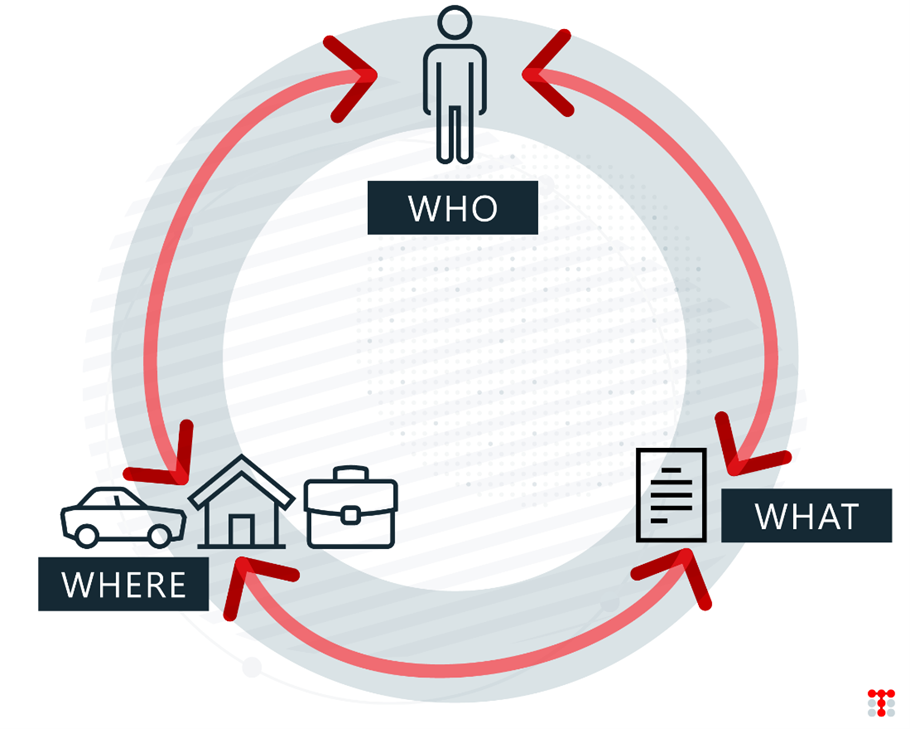Two Supply Chain UX Designers Walk Into a Barcode

I once read that UX is like a joke; if you have to explain it, it’s not very good. It turns out that this joke doesn’t always land very well in UX circles because it ignores audience and context; like a joke, the anatomy of UX in logistics is often far more complex than what meets the eye. How do you elicit joy by critically addressing problems in the world? How do you create positive experiences across audiences? What contextual factors should be considered? What data points do you have access to that will help optimize your design? How do you make enterprise software enjoyable to use? Humor me for a moment, and let’s look at UX in logistics.
Perhaps the most critical question is, why should supply chain organizations care about a software’s UX design? We explored these questions and more with Aveline Sodji, principal UX designer at Tecsys, when she joined me as a guest on The Great Supply Chain Podcast for an episode titled “Why Do Supply Chain Workers Need a Great Software User Experience?” Our conversation helped shine a spotlight on the rising consequence of intuitive user design in supply chain software.
The Setup
Let’s start from the top. What is UX, really? Don Norman, co-founder of Neilson Norman Group, coined the term ‘UX’ in the 1990s as “everything that touches upon your experience with the product,” spanning both how people think about it and how they feel about it.
When we refer to UX in logistics, we’re talking about the way in which people (users) interact with (experience) a software system in order to perform their tasks. As technology and automation continue to infuse tremendous business value in warehouse management, the users involved are critical to business success. As such, attention should be paid to how intuitive, natural and delightful those user experiences are.

The key to UX in logistics, as Aveline explains in our conversation, is to gather user data and feedback from the very beginning, establish a robust feedback loop and contextualize absolutely everything, from user to context to task, into day-to-day working patterns: “[UX] takes all these components together and that’s what we take into consideration when we’re working on a particular flow.”
In the words of Robert W. Bailey, PhD, user experience designer and consultant:
"People performing in systems have in common that they are each somebody, doing something, someplace."
(Bailey, 1996)
The Connector
People are at the heart of every supply chain and the software that connects those people should empower them to excel in their role. Understanding and respecting how people are connected to the processes they perform goes a long way to providing a positive working environment. UX in logistics is “a discipline that involves designing software for specific users in a specific context taking into consideration a specific task or set of tasks.”
In an industry and a labor market that is struggling to compete for talent, this emphasis on people mustn’t be ignored; wages only go so far to attract new talent, but with more and more digital natives in today’s workforce, enterprise software UX is an increasingly important dimension of talent attraction, satisfaction and retention, especially in the supply chain where antiquated software is still commonplace. “If your software is creating frustration among your labor force, that will reflect in your retention,” notes Aveline.
The Reveal
Effective UX in logistics has reverberating effects on culture in the workplace over and above the labor equation. “When we pay attention to the user experience we create for our users,” Aveline explains, “the workers will find that it is easier for them to accomplish their work. They can do their work faster, with fewer errors and they can exceed expectations, and ultimately do more with less.” This is a key variable in the formula for motivated employees and job satisfaction.
That demand for effortless workflow is most prominent with a new generation of employees that expect technology to ‘just work’ with consistency across applications and devices. An iPad app should work the way iPad apps work – intuitively. When it doesn’t, we can predict stress and anxiety levels to be elevated.
The Punchline
The punchline for a UX designer is hearing from a user, ‘Of course, that’s the way it should work!’ Although Aveline admits that it’s also music to her ears because it means that the rigorous work on the back end has done its job.
See, for something to ‘work the way it should’ is the ultimate in sophistication. As Aveline recounts, it’s typically the result of a comprehensive inventory of users per stratum with analyses on how they use a piece of software, what tasks they need to complete, what functions they use, and then iteratively designing software to reduce friction according to the patterns that reveal themselves. It’s about understanding each type of user’s unique needs and catering to those without sacrificing consistency; in the world of UX in logistics, unbridled flexibility can lead to complexity. The better approach is to contextualize flexibility within the patterns of usage observed.
The Callback
The conditions of the supply chain industry are undeniably pressing on operational performance and margin around the world. Many global factors are also contributing to this challenging ecosystem. From labor shortages to bottlenecks to conforming to new supply chain paradigms, remedying these ailments is a tall order.
Good UX in logistics is not a panacea, but it is a keystone in a people-centric operation where “performing tasks that are aligned to employees’ natural way of doing work,” as Aveline puts it, can support more consistent and efficient operations. Many supply chains are still shedding legacy software that are largely relics of a previous supply chain era. Aveline and her team advocate for a mindset where people precede process as a means to delight your workforce.
Because all jokes aside, many supply chain operations and the software that run them are less healthy than they could be, and good UX is the best medicine.
